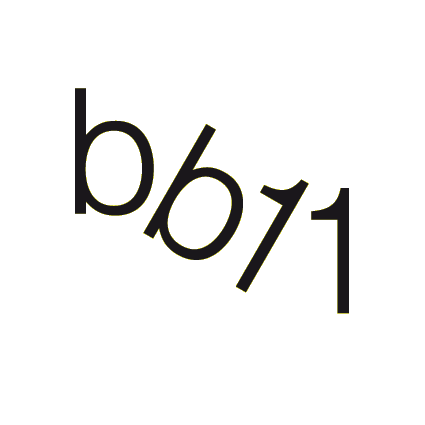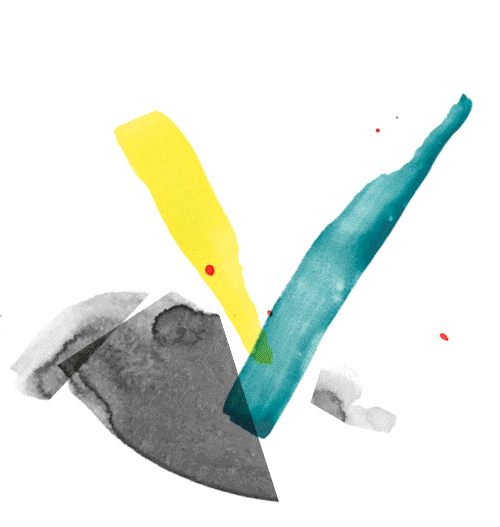

Sign up for our newsletters. You can change the settings or unsubscribe at any time.
Thank you for your subscription. We have sent you an e-mail with a confirmation link.


exp. 1
exp. 2
exp. 3

Shuvinai Ashoona
Venues: KW Institute for Contemporary Art, Gropius Bau
Shuvinai Ashoona
Born 1961 in Kinngait, CA – lives and works in Kinngait
Born into a family of revered Inuit women artists, Shuvinai Ashoona soon distinguished herself with an idiosyncratic style that combined traditional, naturalistic subject matter with fantastical elements and altered perceptions of reality. While her early monochromatic drawings sparsely recorded everyday Arctic scenes and landscapes from her family’s nomadic life in Canada’s far North, her imaginative and often eccentric artistic visions reached fruition in later work that introduced both color and an expanded thematic repertoire including popular culture and religious imagery. Like that of her cousin Annie Pootoogook (1969–2016), whose own successful artistic career was tragically cut short by her untimely death, Ashoona’s trajectory reflects a generational shift that reveals both the influence of the South as well as the contemporary Canadian art world’s belated acknowledgement of the vital artistic scene of her hometown, Kinngait (Cape Dorset).
In the presented selection of recent drawings, Ashoona juxtaposes and layers motifs found throughout her work—birthing mothers, human-animal hybrids, monsters, Inuktitut syllabics—in whimsical, sometimes unsettling vignettes that blur the lines between past and present, fiction and reality, traditional and globalized cultures. The works on display speculate upon the political potential of maternity—and matriarchy as a possible counterpoint to patriarchy. Ashoona also makes reference to the labor of drawing itself: Monsters Holding a Drawing (2015) shows a group of figures in hoodies enraptured not by the giant blue monster dangling a purple octopus by its tail, but by the drawing held between them—of a woman holding a tree branch with a hanging bat in one hand and yet another drawing in the other.
The pieces at the Gropius Bau testify to the inextricable ties between colonialism and modernity. Composition (Clock) (2014) suggests an Indigenous temporality that departs from a Western linear chronology, while in Salt Bones (2016) a cluster of whalebones, washed up on the shore and used in traditional Inuit carving practices, alludes both to the sea as a source of sustenance and artistic inspiration, as well as the circularity of life cycles.
Michèle Faguet
Flávio de Carvalho: Fazenda Capuava
Archive of Lisette Lagnado
Photographs
Expresiones de la locura: el arte de los enfermos mentales
Hans Prinzhorn
Monograph
Weaving Solidarity
Renata Cervetto and Duygu Örs
Q&A
III: La familia son quiénes se alegran con nuestros actos diarios. Detrás de las curadoras de la XI
María Berríos, Agustín Pérez Rubio
Conversation
Struggle as Culture: The Museum of Solidarity, 1971–73
María Berríos
Essay
New Look
Flávio de Carvalho
Performance
By using this website you agree to the use of cookies in accordance with our data privacy policy.

Shuvinai Ashoona
Venues: KW Institute for Contemporary Art, Gropius Bau
Shuvinai Ashoona
Born 1961 in Kinngait, CA – lives and works in Kinngait
Born into a family of revered Inuit women artists, Shuvinai Ashoona soon distinguished herself with an idiosyncratic style that combined traditional, naturalistic subject matter with fantastical elements and altered perceptions of reality. While her early monochromatic drawings sparsely recorded everyday Arctic scenes and landscapes from her family’s nomadic life in Canada’s far North, her imaginative and often eccentric artistic visions reached fruition in later work that introduced both color and an expanded thematic repertoire including popular culture and religious imagery. Like that of her cousin Annie Pootoogook (1969–2016), whose own successful artistic career was tragically cut short by her untimely death, Ashoona’s trajectory reflects a generational shift that reveals both the influence of the South as well as the contemporary Canadian art world’s belated acknowledgement of the vital artistic scene of her hometown, Kinngait (Cape Dorset).
In the presented selection of recent drawings, Ashoona juxtaposes and layers motifs found throughout her work—birthing mothers, human-animal hybrids, monsters, Inuktitut syllabics—in whimsical, sometimes unsettling vignettes that blur the lines between past and present, fiction and reality, traditional and globalized cultures. The works on display speculate upon the political potential of maternity—and matriarchy as a possible counterpoint to patriarchy. Ashoona also makes reference to the labor of drawing itself: Monsters Holding a Drawing (2015) shows a group of figures in hoodies enraptured not by the giant blue monster dangling a purple octopus by its tail, but by the drawing held between them—of a woman holding a tree branch with a hanging bat in one hand and yet another drawing in the other.
The pieces at the Gropius Bau testify to the inextricable ties between colonialism and modernity. Composition (Clock) (2014) suggests an Indigenous temporality that departs from a Western linear chronology, while in Salt Bones (2016) a cluster of whalebones, washed up on the shore and used in traditional Inuit carving practices, alludes both to the sea as a source of sustenance and artistic inspiration, as well as the circularity of life cycles.
Michèle Faguet
By using this website you agree to the use of cookies in accordance with our data privacy policy.

Shuvinai Ashoona
Venues: KW Institute for Contemporary Art, Gropius Bau
Shuvinai Ashoona
Born 1961 in Kinngait, CA – lives and works in Kinngait
Born into a family of revered Inuit women artists, Shuvinai Ashoona soon distinguished herself with an idiosyncratic style that combined traditional, naturalistic subject matter with fantastical elements and altered perceptions of reality. While her early monochromatic drawings sparsely recorded everyday Arctic scenes and landscapes from her family’s nomadic life in Canada’s far North, her imaginative and often eccentric artistic visions reached fruition in later work that introduced both color and an expanded thematic repertoire including popular culture and religious imagery. Like that of her cousin Annie Pootoogook (1969–2016), whose own successful artistic career was tragically cut short by her untimely death, Ashoona’s trajectory reflects a generational shift that reveals both the influence of the South as well as the contemporary Canadian art world’s belated acknowledgement of the vital artistic scene of her hometown, Kinngait (Cape Dorset).
In the presented selection of recent drawings, Ashoona juxtaposes and layers motifs found throughout her work—birthing mothers, human-animal hybrids, monsters, Inuktitut syllabics—in whimsical, sometimes unsettling vignettes that blur the lines between past and present, fiction and reality, traditional and globalized cultures. The works on display speculate upon the political potential of maternity—and matriarchy as a possible counterpoint to patriarchy. Ashoona also makes reference to the labor of drawing itself: Monsters Holding a Drawing (2015) shows a group of figures in hoodies enraptured not by the giant blue monster dangling a purple octopus by its tail, but by the drawing held between them—of a woman holding a tree branch with a hanging bat in one hand and yet another drawing in the other.
The pieces at the Gropius Bau testify to the inextricable ties between colonialism and modernity. Composition (Clock) (2014) suggests an Indigenous temporality that departs from a Western linear chronology, while in Salt Bones (2016) a cluster of whalebones, washed up on the shore and used in traditional Inuit carving practices, alludes both to the sea as a source of sustenance and artistic inspiration, as well as the circularity of life cycles.
Michèle Faguet
BLM KOREA ARTS
#BlackLivesMatter #BLMKoreaArts
Young-jun Tak
Statement
O Bailado do Deus Morto
Flávio de Carvalho
Play
Undocumented Rumours and Disappearing Acts from Chile
María Berríos
Essay
Glossary of Common Knowledge
L’Internationale Online
Glossary
Solidarity and Storytelling. Rumors against Enclosure
María Berríos
Essay
Teatro da Vertigem
Monograph
By using this website you agree to the use of cookies in accordance with our data privacy policy.

Shuvinai Ashoona
Venues: KW Institute for Contemporary Art, Gropius Bau
Shuvinai Ashoona
Born 1961 in Kinngait, CA – lives and works in Kinngait
Born into a family of revered Inuit women artists, Shuvinai Ashoona soon distinguished herself with an idiosyncratic style that combined traditional, naturalistic subject matter with fantastical elements and altered perceptions of reality. While her early monochromatic drawings sparsely recorded everyday Arctic scenes and landscapes from her family’s nomadic life in Canada’s far North, her imaginative and often eccentric artistic visions reached fruition in later work that introduced both color and an expanded thematic repertoire including popular culture and religious imagery. Like that of her cousin Annie Pootoogook (1969–2016), whose own successful artistic career was tragically cut short by her untimely death, Ashoona’s trajectory reflects a generational shift that reveals both the influence of the South as well as the contemporary Canadian art world’s belated acknowledgement of the vital artistic scene of her hometown, Kinngait (Cape Dorset).
In the presented selection of recent drawings, Ashoona juxtaposes and layers motifs found throughout her work—birthing mothers, human-animal hybrids, monsters, Inuktitut syllabics—in whimsical, sometimes unsettling vignettes that blur the lines between past and present, fiction and reality, traditional and globalized cultures. The works on display speculate upon the political potential of maternity—and matriarchy as a possible counterpoint to patriarchy. Ashoona also makes reference to the labor of drawing itself: Monsters Holding a Drawing (2015) shows a group of figures in hoodies enraptured not by the giant blue monster dangling a purple octopus by its tail, but by the drawing held between them—of a woman holding a tree branch with a hanging bat in one hand and yet another drawing in the other.
The pieces at the Gropius Bau testify to the inextricable ties between colonialism and modernity. Composition (Clock) (2014) suggests an Indigenous temporality that departs from a Western linear chronology, while in Salt Bones (2016) a cluster of whalebones, washed up on the shore and used in traditional Inuit carving practices, alludes both to the sea as a source of sustenance and artistic inspiration, as well as the circularity of life cycles.
Michèle Faguet
A World Without Bones
Agustín Pérez Rubio
Weaving Solidarity
Renata Cervetto and Duygu Örs
Q&A
Hatred Among Us
Lisette Lagnado
Essay
III: La familia son quiénes se alegran con nuestros actos diarios. Detrás de las curadoras de la XI
María Berríos, Agustín Pérez Rubio
Conversation
#fight4rojava
Graffiti
Teatro da Vertigem
Monograph
By using this website you agree to the use of cookies in accordance with our data privacy policy.
By using this website you agree to the use of cookies in accordance with our data privacy policy.




